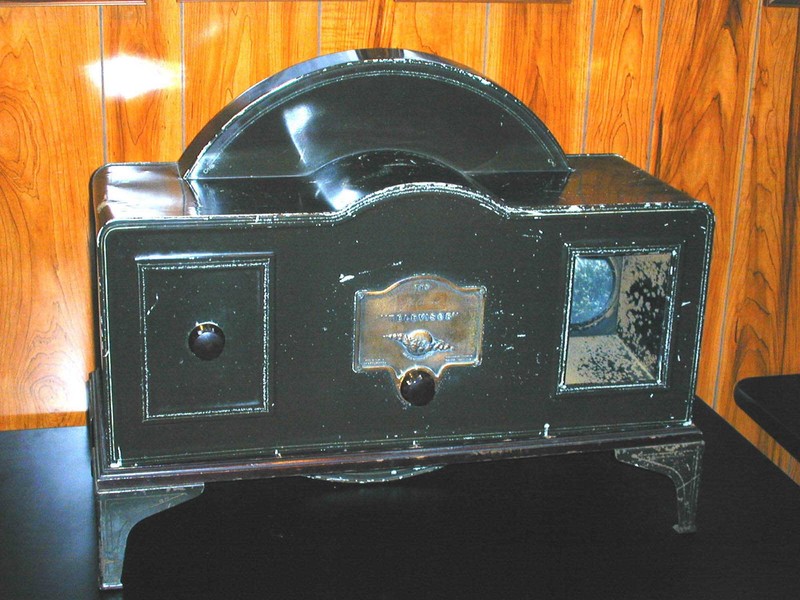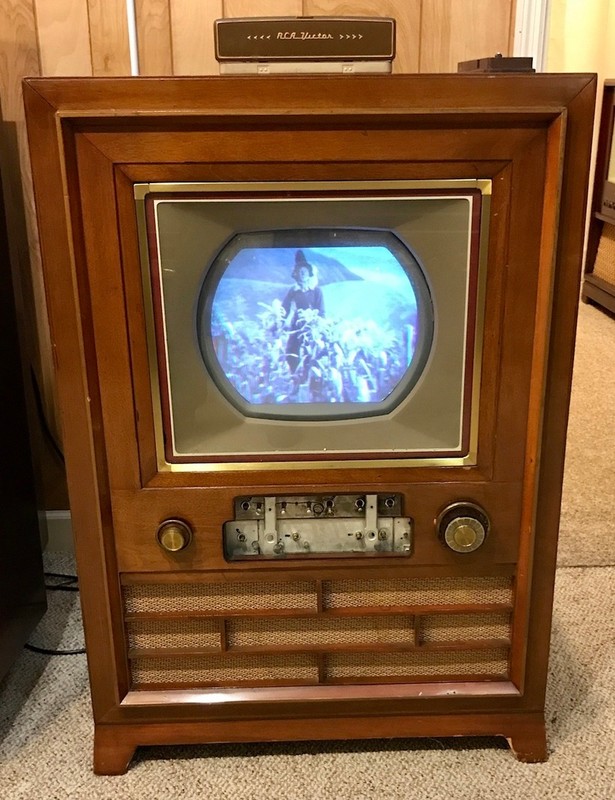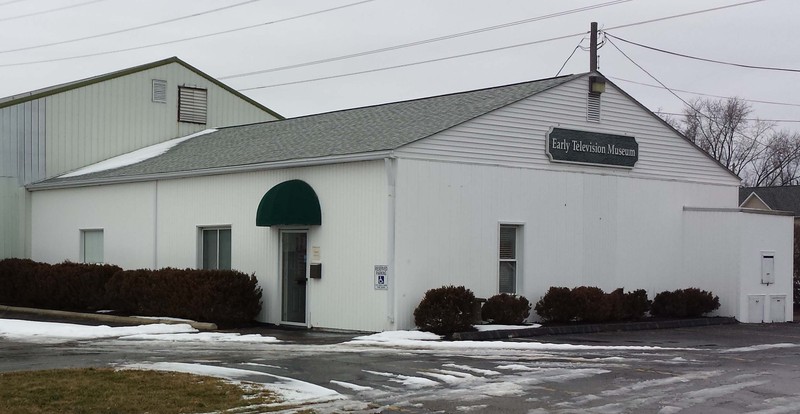Early Television Museum
Introduction
Text-to-speech Audio
Images
The Early Television Museum contains over 150 television sets from the 1920s to the 1950s. Image obtained from TripAdvisor.

The 1929 Baird Televisor was the first commercially available mechanical television. It produced a poor quality image the size of a postage stamp. Image courtesy of the Early Television Foundation.

The museum has restored many televisions back to operating condition, including this 1954 RCA CT-100 set. Image obtained from Huffington Post.

Other items at the museum include television cameras and this 1948 RCA mobile broadcasting van. Image obtained from TripAdvisor.

The Early Television Museum was established in 2000 originally to house Steve McVoy's growing collection of antique televisions. Image courtesy of the Early Television Foundation.

Backstory and Context
Text-to-speech Audio
The Early Television Museum and the Early Television Foundation were established in 2000 by Steve McVoy, a lifelong television enthusiast who owned a successful local cable business. After selling his business in 1999, McVoy began a hobby of collecting old television sets. His hobby brought him into contact with collectors from around the country, and he developed a particular interest in pre-World War II television sets. After realizing that there were no museums dedicated solely to television, McVoy decided to open his own in a local warehouse. The museum began with about 50 television sets and 2,500 square feet of space; it has since expanded to over 150 sets with 6,000 square-feet of space.
The museum is most well known for its collection of extremely rare pre-World War II television sets, of which fewer than 500 are believed to still be in existence. While television became popular and widespread in the late 1940s, it had actually been in existence since the mid-1920s. The first functional television sets were developed by British inventor John Logie Baird and American inventor Charles Francis Jenkins. These early models were mechanical, rather than electronic; it lacked transistors, amplifiers, or any electronic component. They operated using rotating disks to both transmit and receive signals. To transmit a signal, the television camera would have to be in a completely dark room. The person being recorded would have to sit in front of the rotating disk as a motor spun it and a bright light beamed through a series of holes on the disk. Light reflecting off the person was converted into electrical impulses, which were then transmitted over the air to a receiving television set. This receiver would then reproduce the image from a neon lamp shining through its own rotating disk.
Baird demonstrated the first successful television image in 1927, and broadcasting began in Britain in 1928. Within a few years there were several dozen mechanical television broadcasting stations in the United States and Europe. Technical limitations severely impeded the mechanical television however. Image quality was extremely poor; the images were small, dim, obscured by Black lines, and prone to fading. Many models of the mechanical television were introduced, but none were produced on a mass scale. By 1933 most of the mechanical television stations had shut down. In the mid and late-1930s electronic televisions were developed, with picture vacuum tubes, and had enormously superior quality. The commercialization of electronic television was delayed by World War II, but by the late 1940s it had become extremely popular.
The Early Television Museum focuses primarily on televisions from the 1920s to the early days of color in the 1950s. It owns over a dozen British and American mechanical television sets, as well as several dozen more electronic prewar sets. Many of these have been restored to working condition and are demonstrated for visitors. Noteworthy post-war items at the museum include an RCA CT-100 (the first mass-produced color TV); a 1947 coin-operated television; and a 1948 mobile production truck. Today the museum continues to work on restoring televisions in their collection to operating condition. Every May it holds an annual convention where collectors gather to give presentations, host workshops, and hold a flea market and auction to raise money for the museum. The museum also has a library of books and documents relating to television for people wanting to conduct research; their website contains links to numerous additional resources as well.
Sources
Ciciora, Walter S. “Ciciora’s Corner: The Early Television Museum.” CED Magazine. May 31, 2009. Accessed January 21, 2018. https://www.cedmagazine.com/article/2009/05/cicioras-corner-early-television-museum.
Early Television Museum. “Mechanical Television Demonstration” (video). Posted May 28, 2015. Accessed January 21, 2018. https://www.youtube.com/watch?v=jWv_FoXItek.
Keane, Maribeth. “Steve McVoy is Tuned Into Vintage Television Sets.” Collectors Weekly. August 19, 2008. Accessed January 21, 2018. https://www.collectorsweekly.com/articles/an-interview-with-vintage-television-set-collector-steve-mcvoy/.
Kool Buildings. “Early Television Museum – Hilliard Ohio” (video). Posted August 5, 2017. Accessed January 20, 2018. https://www.youtube.com/watch?v=68sdMecjJcE.
Williams, Mark. “Collecting Television’s Technological History: Steve McVoy in Conversation with Mark Williams.” Journal of e-Media Studies 5, no. 1 (2016). Accessed January 21, 2018. https://journals.datrmouth.edu/cgi-bin/WebObjects/Journals.woa/1/xmlpage/4/document/1061.
Wolpin, Stewart. “Where Old TVs go to Live.” Huffington Post. May 15, 2017. Accessed January 21, 2018. https://www.huffingtonpost.com/entry/where-old-tvs-go-to-live_us_5919e5b6e4b086d2d0d8d18a.
Image 1: http://www.earlytelevision.org/images/Museum_Outside.jpg
Image 2: https://media-cdn.tripadvisor.com/media/photo-s/0d/19/34/7b/early-television-museum.jpg
Image 3: http://www.earlytelevision.org/baird_televisor.html
Image 4: https://img.huffingtonpost.com/asset/5919e8071500002800db2674.jpg?ops=scalefit_820_noupscale
Image 5: https://media-cdn.tripadvisor.com/media/photo-s/06/80/7b/51/early-television-museum.jpg